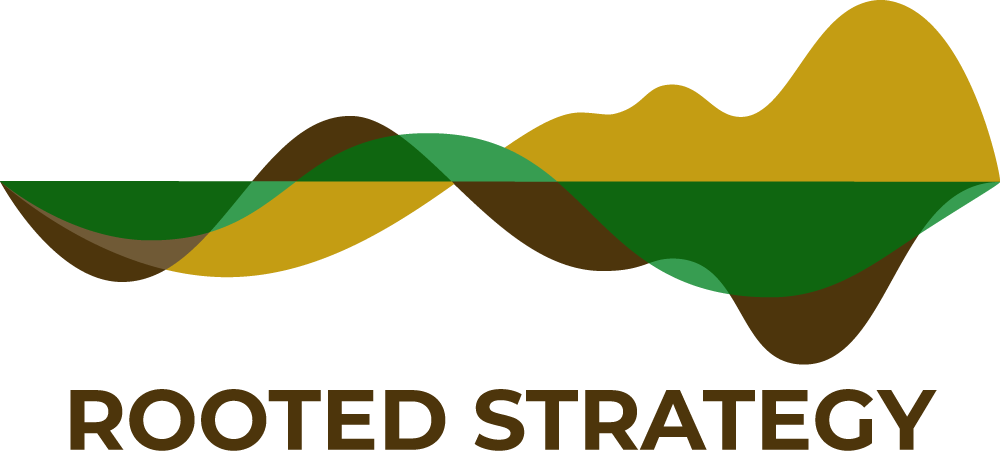Brand New Classic: The Positioning Every Social Entrepreneur Needs
I was half-watching TV last weekend when a Taco Bell commercial made me sit up straight.
“It’s a Brand New Classic.”
That was the tagline for their new menu item: a crispy chicken taco with hot sauce.
And something about it just clicked.
Because here's what that company’s marketing team understands that most social entrepreneurs are still figuring out: people want something that feels both exciting and inevitable.
Crispy chicken. Hot sauce. A taco. Nothing about that combination is revolutionary. Americans already love all three of those things separately. But putting them together in this particular way? It creates something that feels both brand new and like it was always supposed to exist.
You already know you want it—you just didn't know it existed yet.
This is the positioning challenge I see with almost every social entrepreneur I coach.
You're building something new because you've identified a gap, a need, an injustice that existing solutions aren't addressing. You know your idea is important. You can feel how much it matters.
But if your innovation feels too unfamiliar—if people can't quickly grasp why society needs it—they won't engage. They'll nod politely and move on to something more familiar.
On the flip side, if what you're offering feels too familiar, people won't see why it matters. They'll assume someone else is already doing it, or that the existing options are good enough.
The sweet spot is innovation that feels inevitable.
Most of the social entrepreneurs I work with can articulate what they're building. They can explain the model, the theory of change, the impact metrics.
But they struggle with a different question: "How do you want people to remember what you offer?"
Not just understand it. Not just support it. Remember it.
Because memory is where your ideas live long after you’ve put them out in the world. Memory is what people carry with them when they leave your website, your event, your pitch. Memory is what they share when someone asks, "Do you know anyone working on [this issue]?"
If your work doesn't lodge itself in people's minds as something both meaningful and recognizable, it doesn't matter how brilliant your model is.
What makes something a "Brand New Classic"?
I think there are four elements:
It addresses a recognized desire or need. Taco Bell isn't trying to convince you that you should want a crispy chicken taco with hot sauce. They're assuming you already want convenient, indulgent, fast food. They're just giving you a new option within that existing framework.
For social entrepreneurs, this means understanding what people already know they want—justice, belonging, safety, opportunity, dignity—and positioning your work as an underexplored, high-potential path to get there.
It combines familiar elements in an unexpected way. The innovation isn't in inventing something completely new. It's in the combination, the configuration, the particular alchemy of putting known things together differently. Maybe you're bringing organizing strategies from labor movements into climate work. Maybe you're applying trauma-informed practices to economic development. Maybe you're using art to facilitate policy change. The pieces are recognizable. The whole is refreshing.
It feels right. This is the hardest element to engineer, but you know it when you encounter it. There's a sense of "oh, of course" alongside "wait, why didn't this exist before?" It's not just clever. It's resonant. It makes sense at a gut level, not just an intellectual one.
Here's where this gets deeper than marketing strategy.
Every action you take is writing a legacy. Every choice about how you position your work, how you talk about it, how you invite people into it—these aren't just tactical decisions. They're shaping how your idea will be remembered and whether it will grow beyond you.
For social entrepreneurs, this matters even more because you're not just building a business. You're trying to shift culture, redistribute power, create new possibilities for how we live together.
You need people to get it quickly enough to engage, but you also need what you're building to be substantial enough to matter.
The "brand new classic" framework helps with both. It gives you permission to meet people where they are—with familiar reference points and accessible language—while still doing work that's genuinely transformative.
So what's your Brand New Classic?
If I'm working with you as a coach, here are the questions I'd ask:
What existing desires or values are you tapping into? (Not creating from scratch — building on)
What familiar elements are you combining in a new way?
When you describe your work, do people immediately understand it or do you have to do a lot of explaining?
Does your positioning feel both exciting and inevitable, or does it lean too far in one direction?
How do you want people to remember what you offer? In one sentence, what's the essence?
You don't need perfection. You need resonance.
You need something people can understand quickly, remember easily, and feel compelled to share.
Because here's the truth: social entrepreneurs are out here trying to get good ideas supported and scaled, often with minimal resources and maximum urgency. We need our ideas to work.
Not just because we're attached to them, but because the alternative—the status quo, the injustice, the harm—isn't acceptable.
So we keep building. We keep testing. We keep refining how we talk about what we're doing until people can see it clearly.
We're all searching for that sweet spot where innovation meets inevitability.
Where what we're building feels both groundbreaking and obvious.
Where people say, "Yes, that. I didn't know we needed it, but we absolutely do."
That's a brand new classic.
